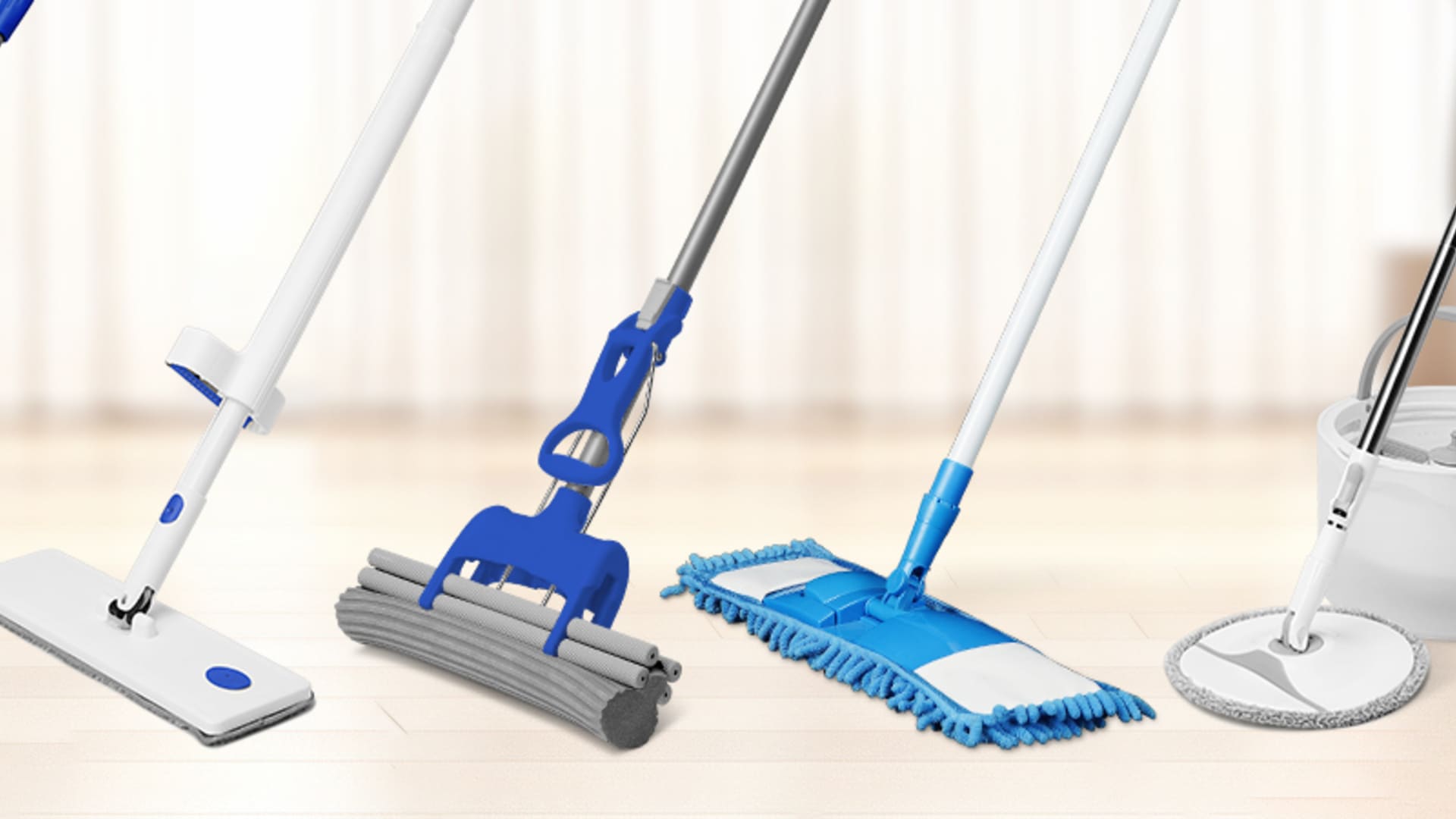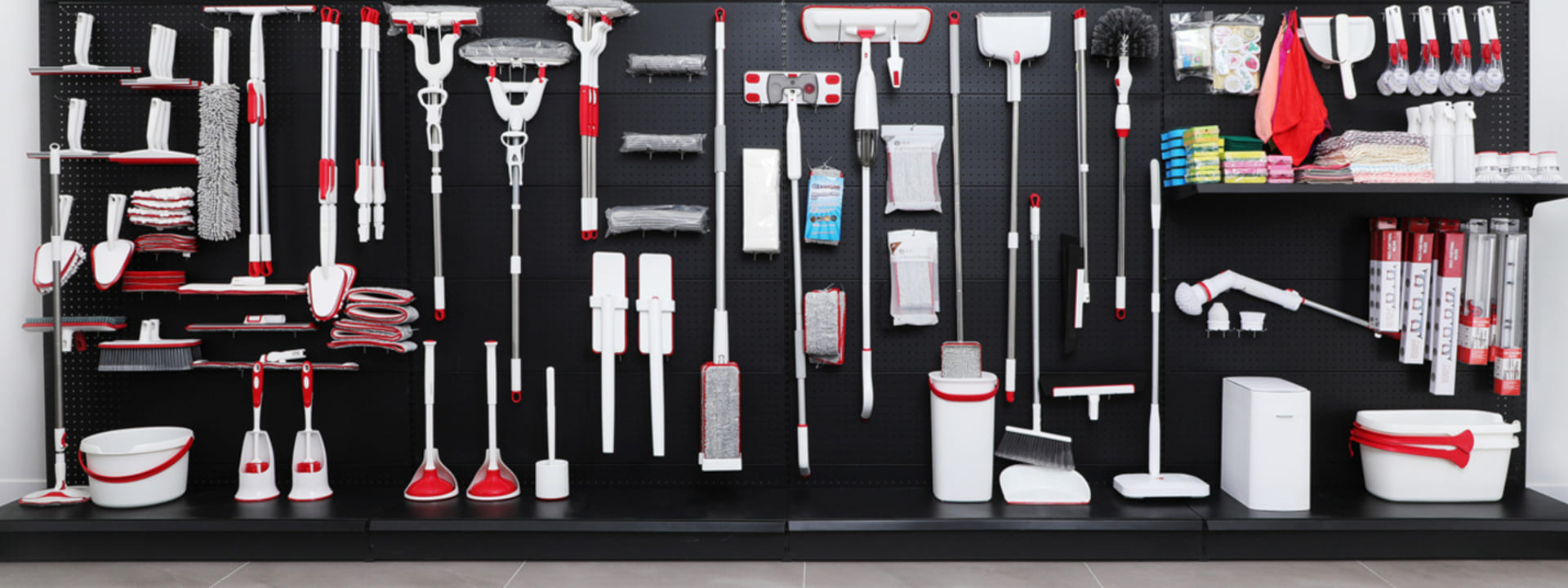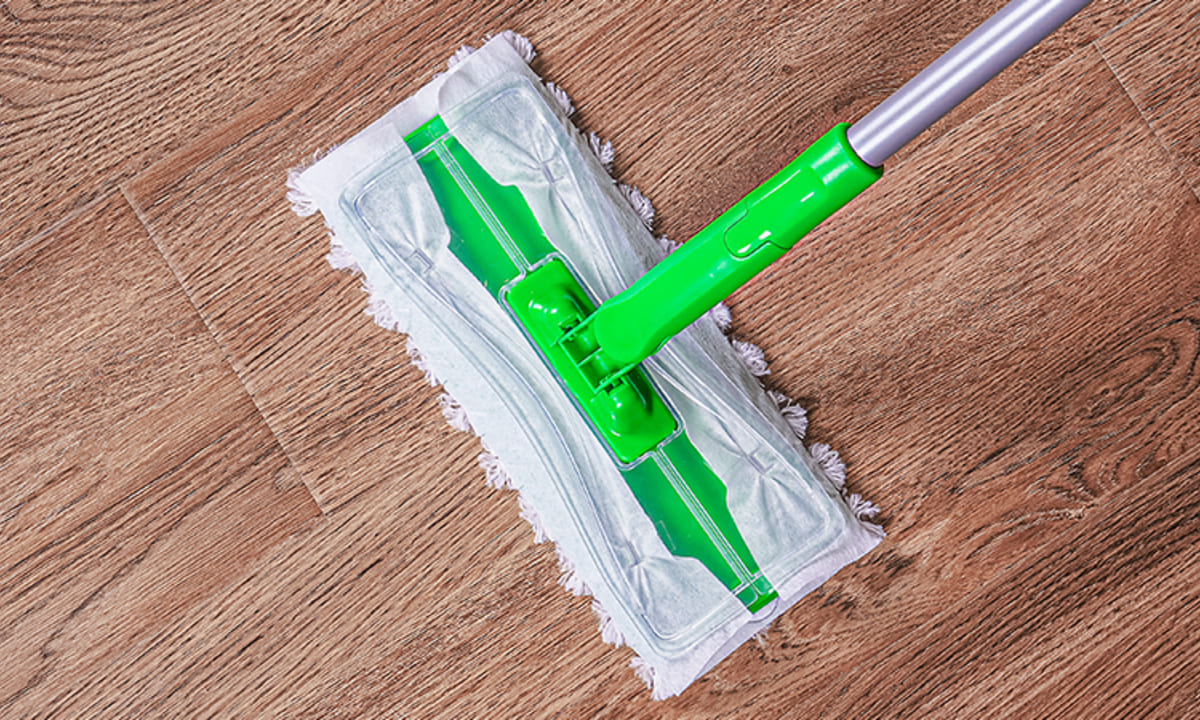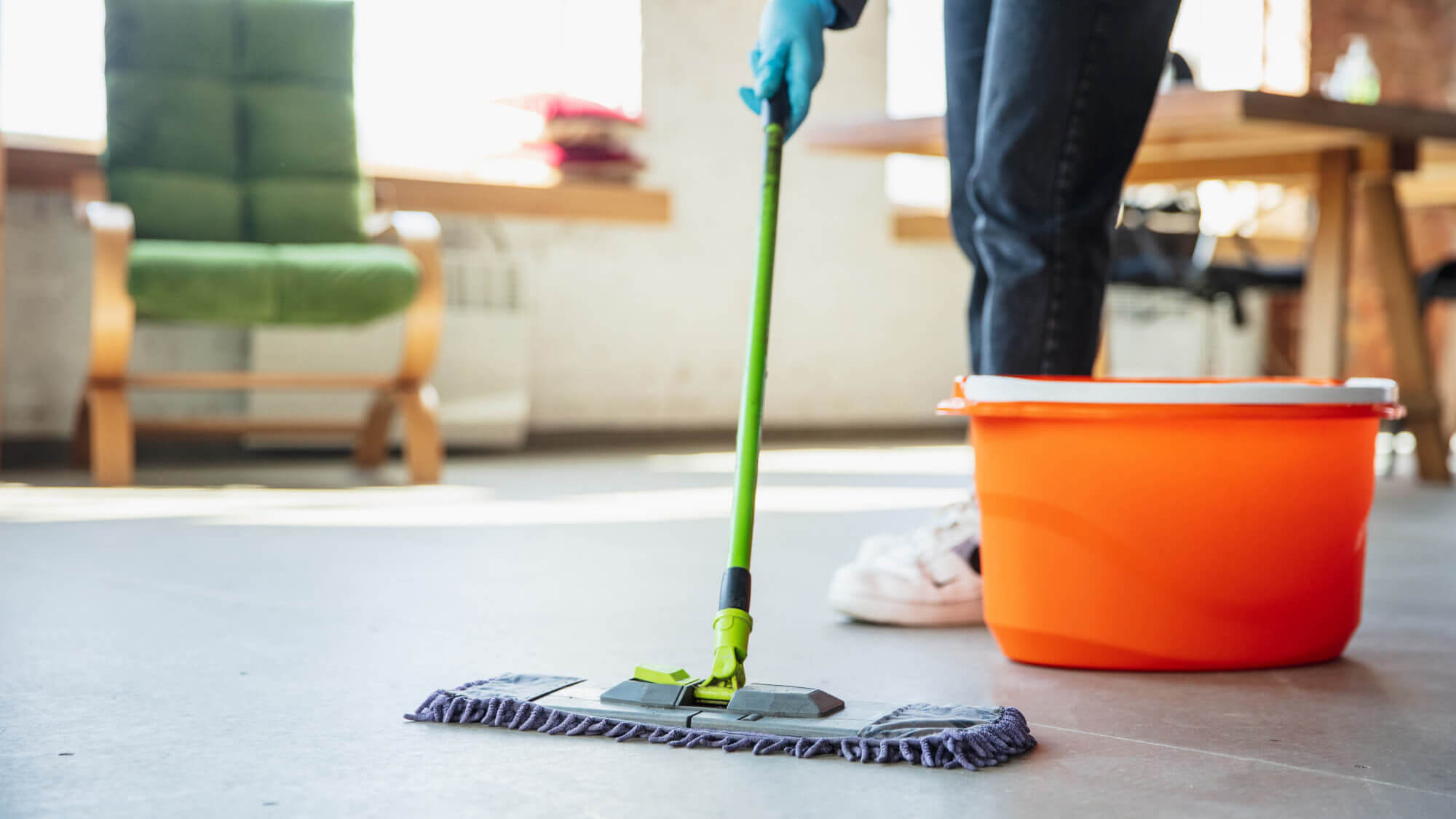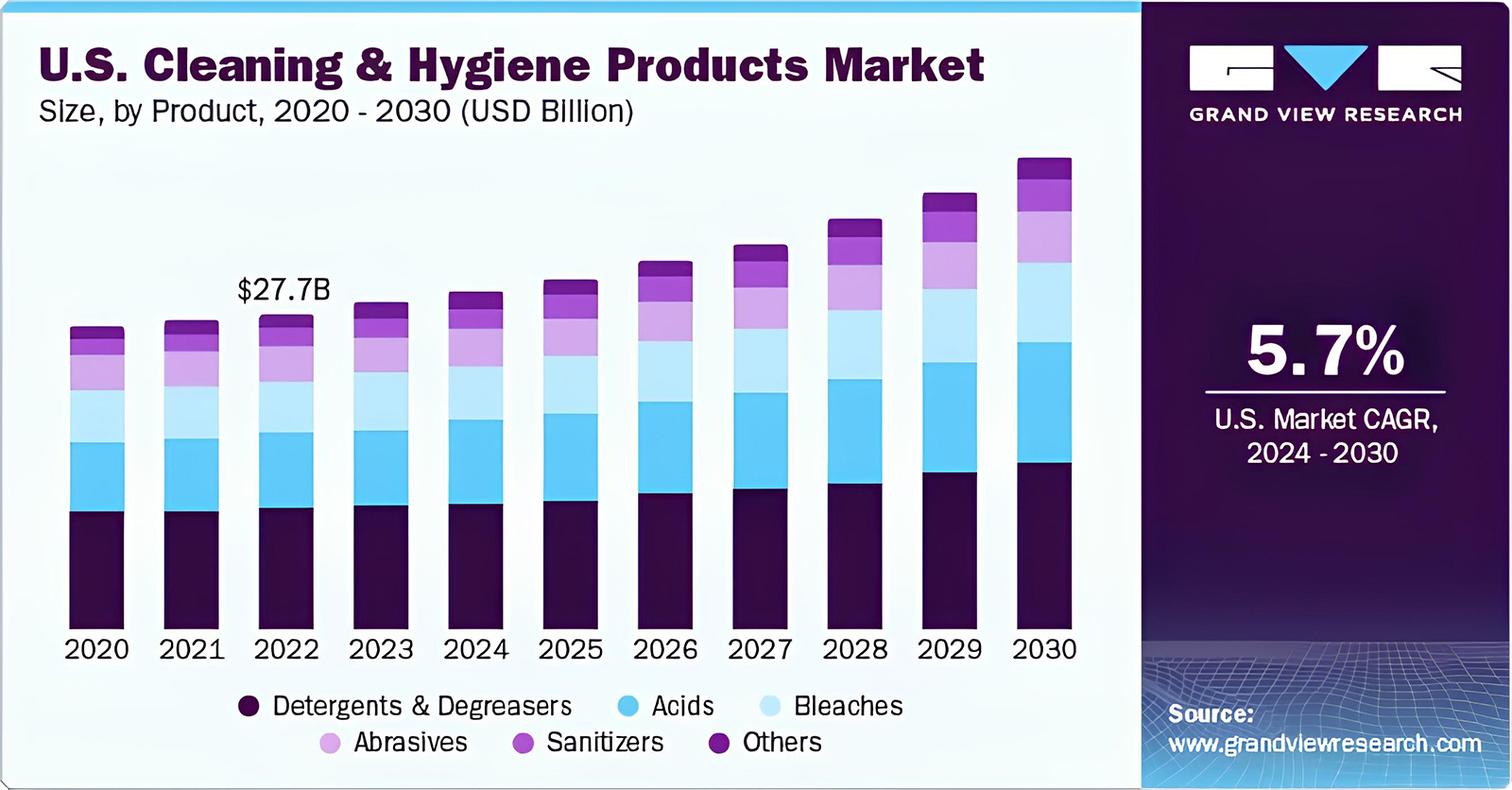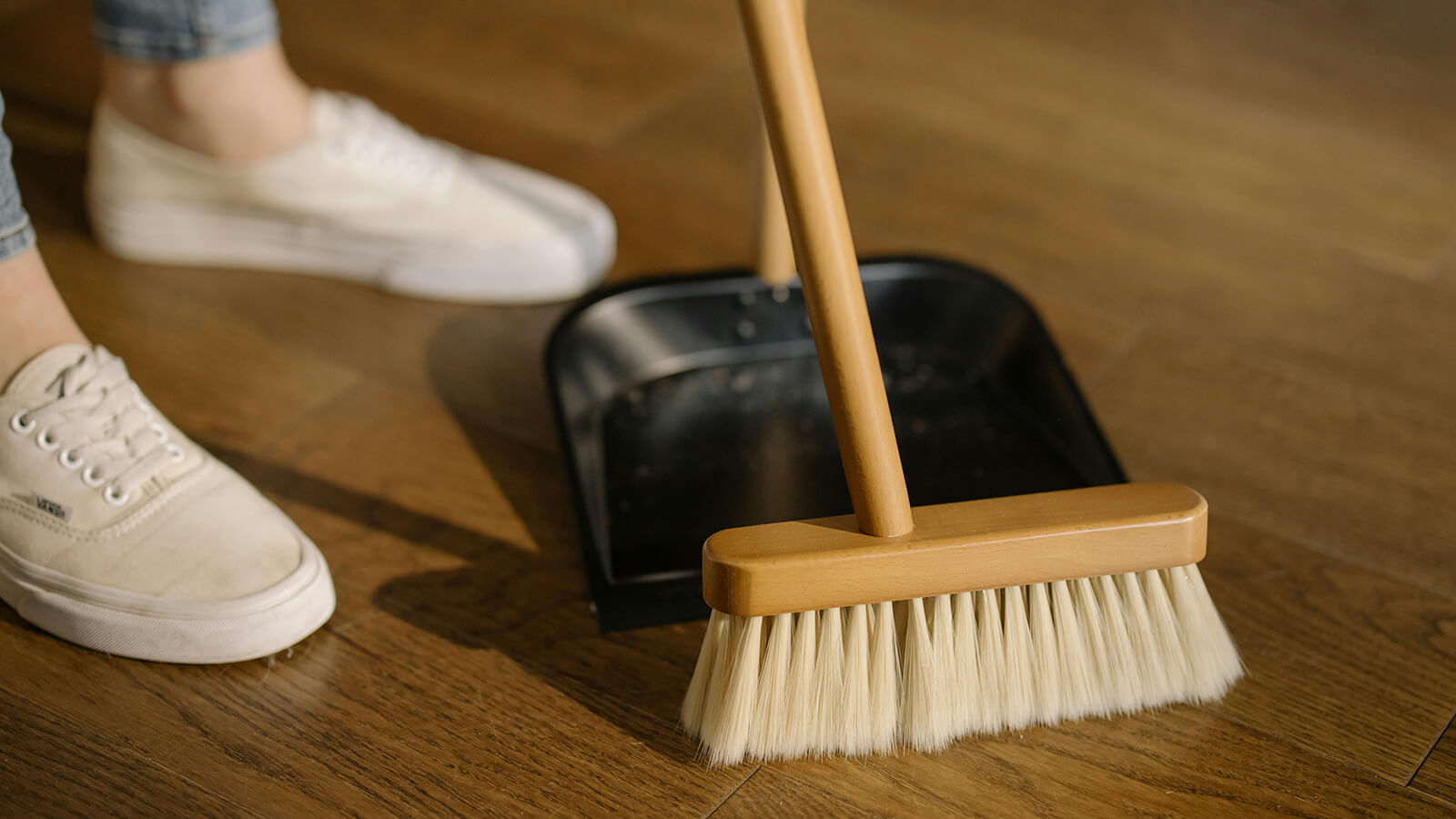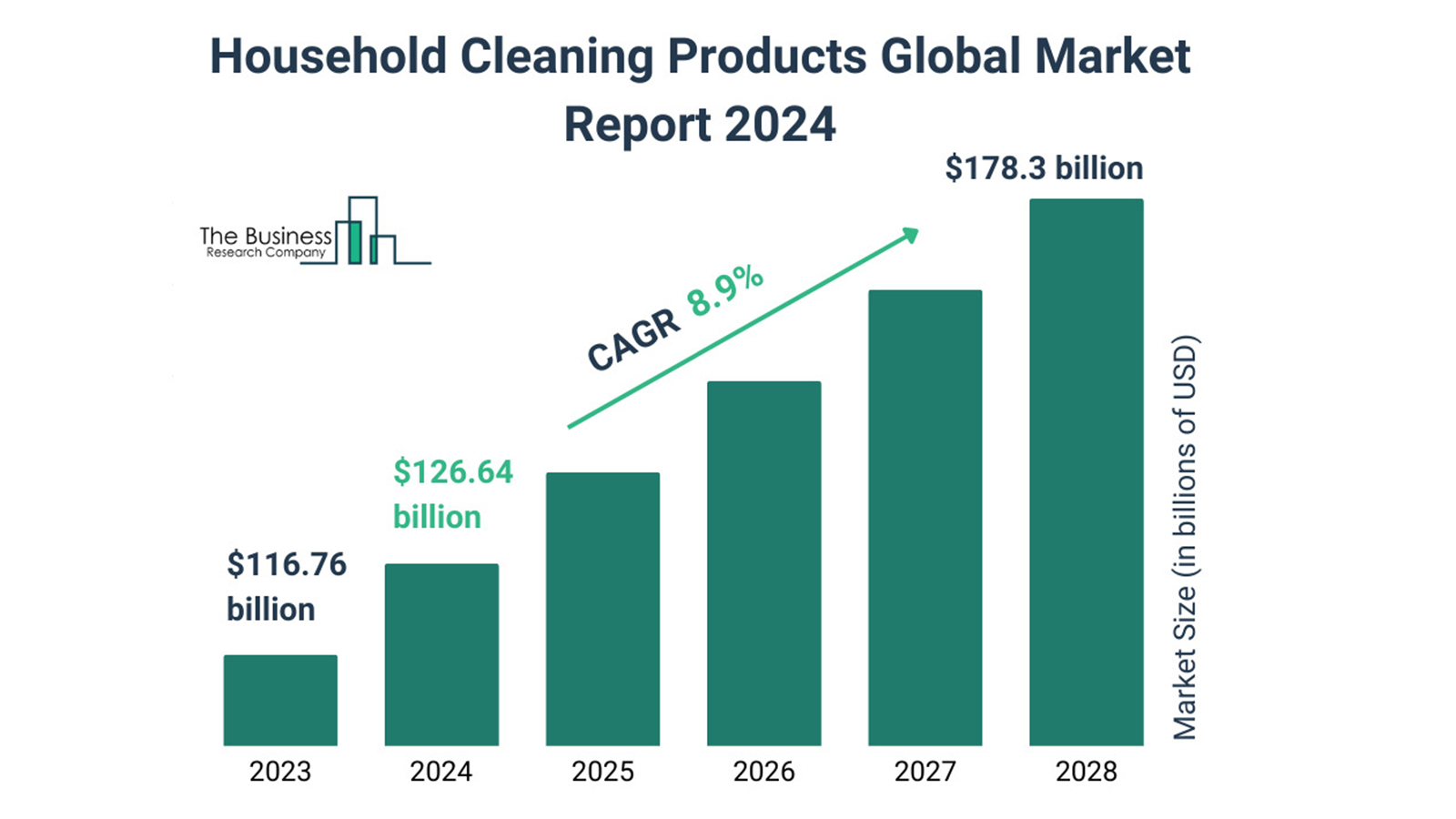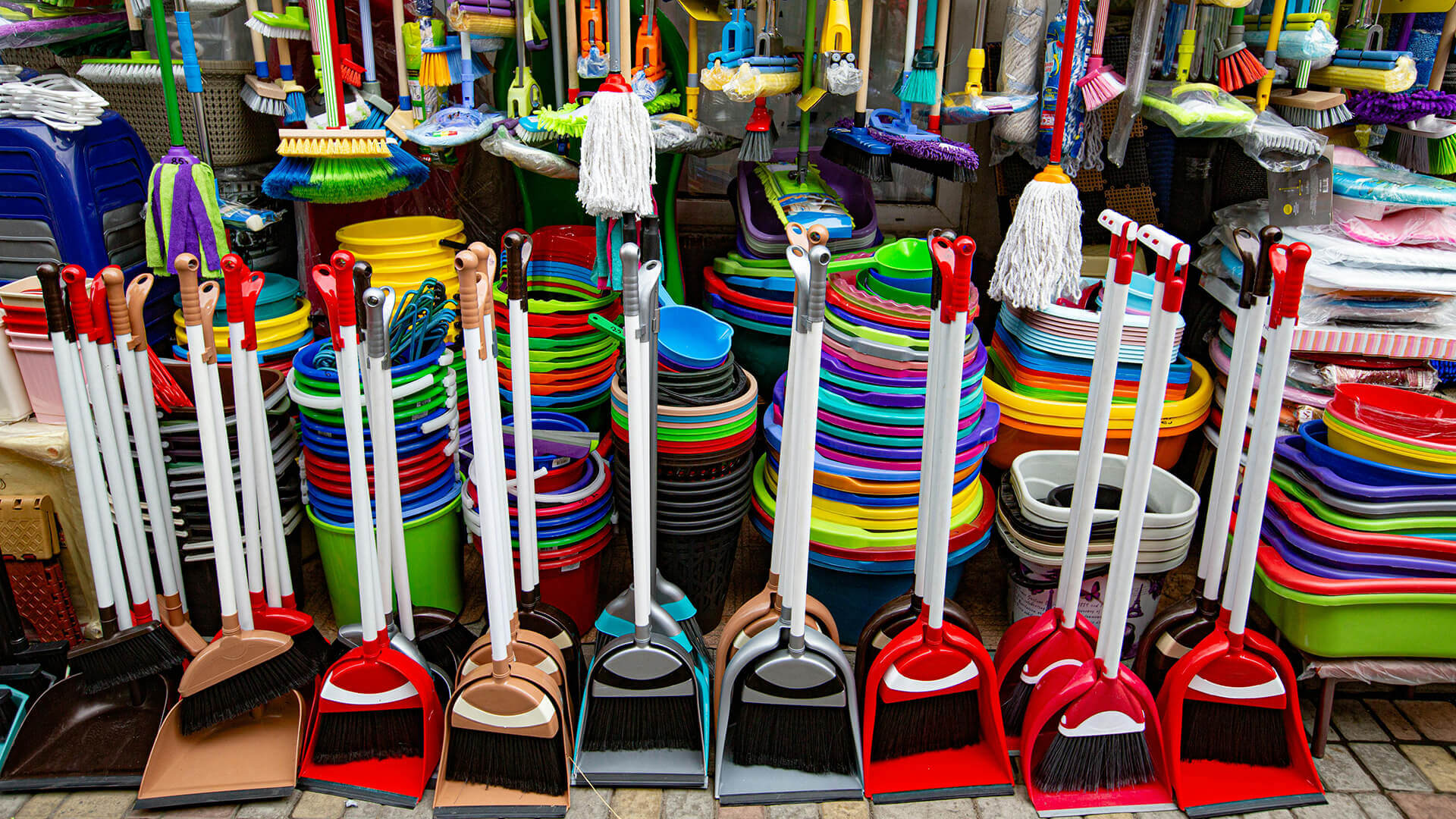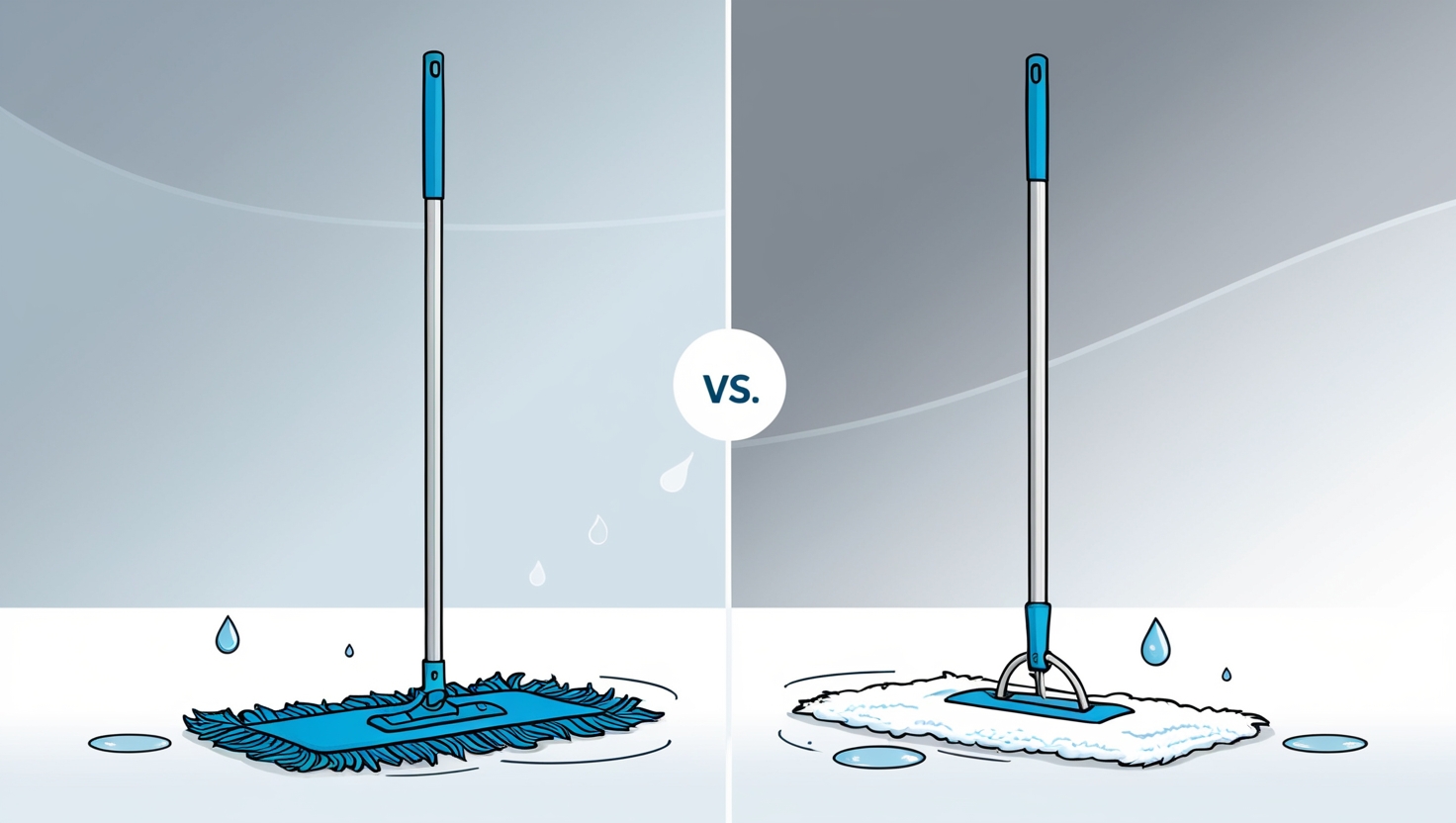Maintaining clean floors can often seem like a relentless task. The wrong mop can leave streaks and missed areas, diminishing the appearance of your space. However, selecting the right tool—whether it’s a sponge mop, microfiber, or steam mop—ensures better results and a smoother process. As a professional industry leader, JESUN manufactures a wide range of high-quality mops designed to support your specific cleaning needs.
In this blog post, we will explore various categories of mops on the market and their features. To help understand what are the common types of mops and how you should select the most suitable ones for your needs.
How Mops Have Changed Over Time?
The mop’s history stretches back to Ancient Greece, where people used cloths or sponges fastened to sticks for cleaning. In 18th-century England, housewives employed mopsticks with attached clothes to clean floors.
The evolution of modern mops began in the 19th century with several key innovations. In 1837, American inventor Jacob Howe was granted US patent #241 for a mop holder, significantly improving mop functionality and paving the way for future designs. Charles Wheeler developed the hand mop in 1876, while Samuel Fuller introduced the sponge mop in 1896. In 1893, Thomas W. Steward, an African-American inventor, patented an improved mop design, further advancing the tool’s efficiency. These inventions laid the foundation for the diverse range of mops we use today, from traditional designs to more advanced cleaning tools.
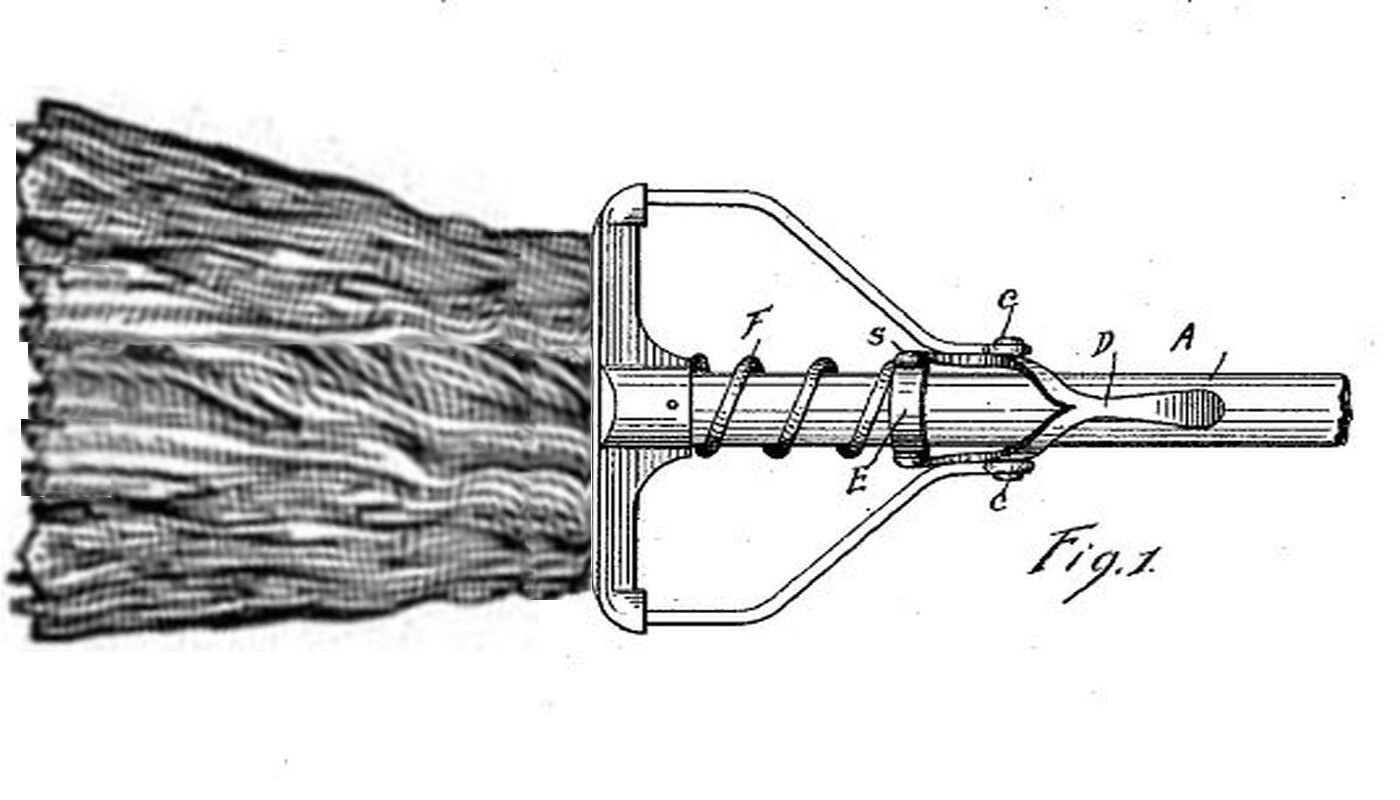
From Handle to Head: How a Mop is Built?
A mop is built using a simple but effective design. The handle is typically made of plastic, metal, or wood. It provides the user with a firm grip. The head of the mop is made from absorbent materials like cotton, microfiber, or sponge. These materials are excellent at soaking up liquids and cleaning surfaces.
Some mops come with a wringing mechanism to squeeze out excess water. The mop head is often detachable, making it easy to replace or wash. Each part is designed for durability, ensuring that the mop can handle frequent cleaning tasks efficiently.
A Breakdown of Common Mop Types and Uses
Steam Mop
A steam mop uses heated water to produce steam for cleaning. The steam mop is especially suitable for tiled and sealed wooden floors. The steam cleans the surface removing dirt and germs and does not require any cleaning solution. This makes it convenient for homes with children and pets. Steam mops are best for regular cleaning and deep cleaning of tough stains.
Spin Mop
Spin mops have a bucket that spins to squeeze out water. The mop head is typically made from microfiber and it spins while you clean. This design provides good control on the extent to which the mop is wet. Spin mops are ideal for large areas and can effectively be used on floor tiles and even wood floors. It is ideal for people who like the hands-free wringing process.
Electric Mop
Electric mops are powered cleaning tools that combine the functionality of traditional mops with motorized features. They typically have automatic rotating heads that help to scrub floors more effectively. Many electric mops come with built-in water tanks and can dispense cleaning solutions as needed. These mops are ideal for those who want a more efficient cleaning experience with less manual effort. They’re particularly useful for large areas or for people with mobility issues. Electric mops can be used on various floor types, including hardwood, tile, and laminate.
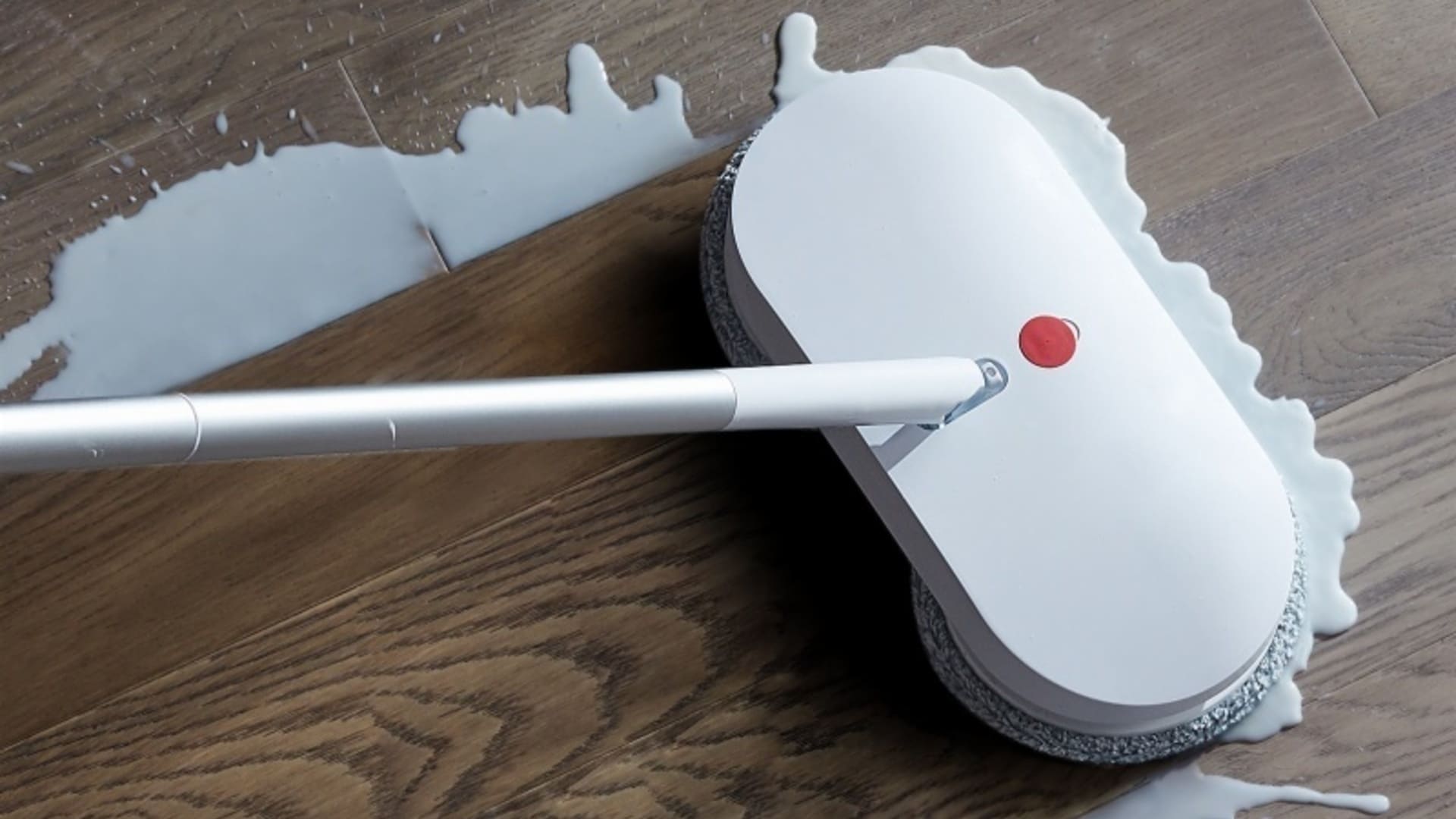
Spray Mop
Spray mops feature a built-in spray mechanism that allows you to dispense cleaning solution directly onto the floor as you clean. This eliminates the need for a separate bucket of water, making the cleaning process more convenient and reducing the risk of over-wetting the floor. Spray mops often use microfiber pads and are suitable for quick clean-ups and everyday maintenance of hard floor surfaces. They’re especially useful for spot cleaning and are a popular choice for homes with children or pets due to their ease of use.

Flat Mop
Nowadays many flat mops come with a rectangular microfiber pad. They are easy to maneuver due to their lightweight. It is best to use flat mops in daily cleaning of hard surfaces such as hardwood, laminate, or tile. The flat head will enable you to sweep in corners and under furniture. These mops are perfect for those who require a fast and effective cleaning tool. The wide, flat surface area enables efficient coverage of large spaces, while the lightweight construction reduces user fatigue. Many flat mops also come with machine-washable pads, making them an eco-friendly and cost-effective option for home and commercial use.
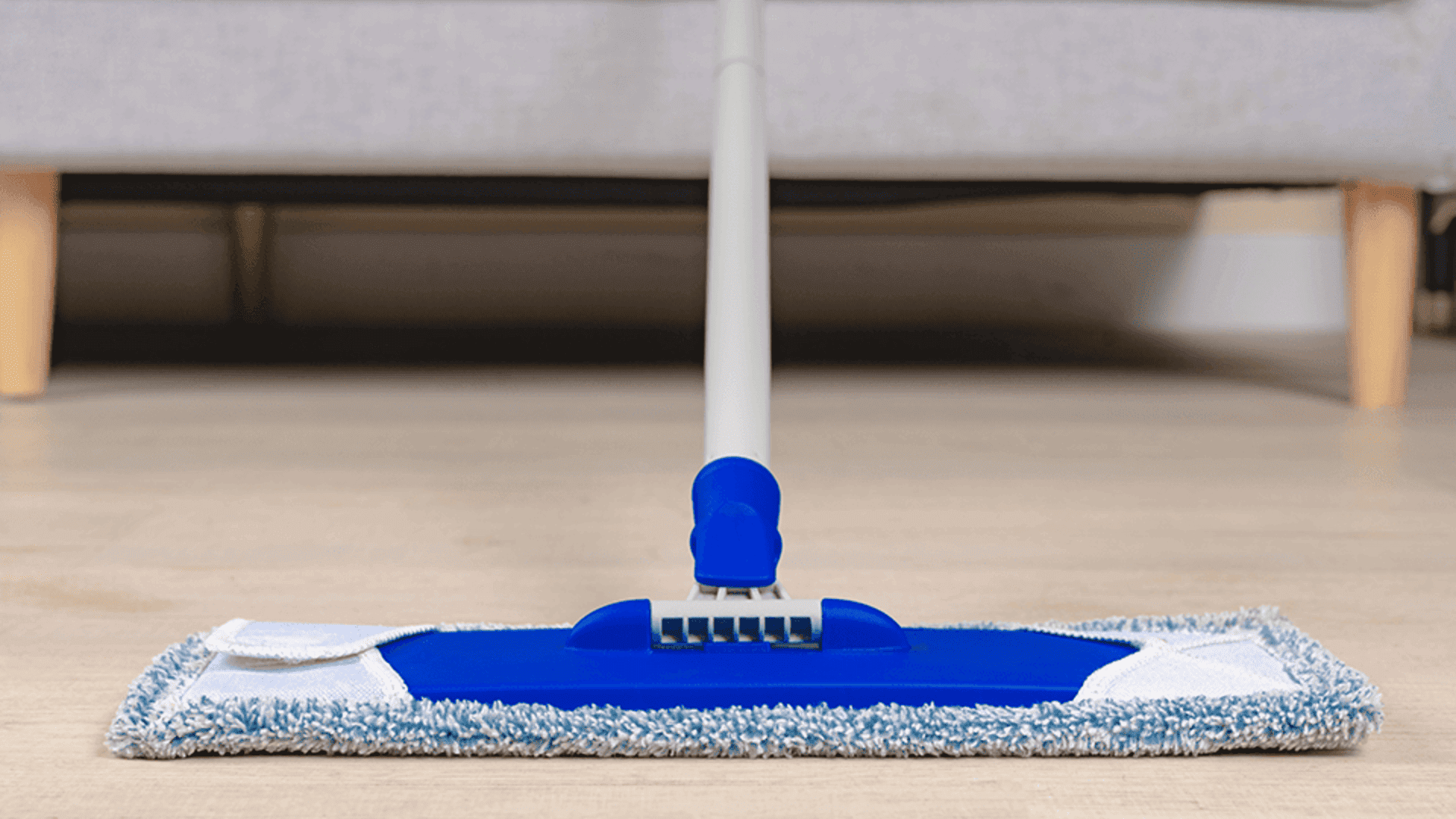
Brush Mop
A brush mop is a mop with stiff bristles fixed on the mop head. These bristles make it ideal for cleaning hard-to-clean stains and grime. Brush mops are suitable for rough surfaces, especially for ceramic tile with texture or outdoor surfaces. They are flexible to use either as wet or dry depending on the cleaning activity. However, they may not be suitable for delicate flooring as would be required in the modern home.
Dust Mop
Dust mops are designed for dry cleaning and picking up dust and debris. They often have microfiber or cotton heads and are excellent for sweeping hardwood or laminate floors. Dust mops are lightweight and can reach into tight spaces, making them ideal for daily cleaning. They are perfect for homes with allergies, as they can easily trap dust.
Looped-End Mop
Looped-end mops are durable string mops made for hard-wearing usage. The mop head is made of one continuous loop for lower chances of fraying. These mops can hold a great deal of water and are effective at absorbing a great extent of surface. Looped-end mops are popular in commercial cleaning but are also ideal for large homes with lots of traffic. They have a longer lifespan than the cut-end mops in use, making them cheaper in the long run.
Cut-End Mop
Cut-end mops are also a common type of string mop, they have individual strands of cotton or synthetic material that are not looped. These mops are cheaper than the looped-end mops but last for a short time. They are suitable to be used for general cleaning purposes, especially for small coverage areas. Cut-end mops are very effective in absorbing liquids but the disadvantage of the cut-end mops is that it leaves a trail of lint. They are most suitable to be used once or for limited cleaning jobs.
Tube Mop
Tube mops are a more advanced version of the looped-end mop. The mop head consists of tubes, which increases its durability and ability to absorb liquid. Tube mops are designed to reduce tangling and fraying. They are perfect for cleaning large, heavily soiled areas. Tube mops are commonly used in industrial settings but can be helpful for big home cleaning tasks too.
Mop types by material
Cotton Mops
Cotton mops are normally famous for their absorptive capacity. Their natural fibers excel at soaking up liquids quickly, making them particularly effective for cleaning expansive floor areas. However, cotton mops have some drawbacks: they take considerable time to dry, which can lead to bacterial growth if not properly maintained, and they tend to leave lint behind when used. Despite these limitations, cotton mops remain a popular choice for general cleaning tasks in residential settings and small office spaces due to their affordability and familiarity.
Microfiber Mops
Microfiber mops are especially effective in capturing dirt and dust. This material can better capture small particles and bacteria than cotton. These mops are highly eco-friendly, requiring less water and cleaning solution to achieve optimal results.
Microfiber’s versatility shines in both wet and dry mopping applications, making it an excellent choice for various smooth surfaces, including hardwood, tile, and laminate flooring. The material’s durability and washability contribute to its cost-effectiveness and reduced environmental impact over time.
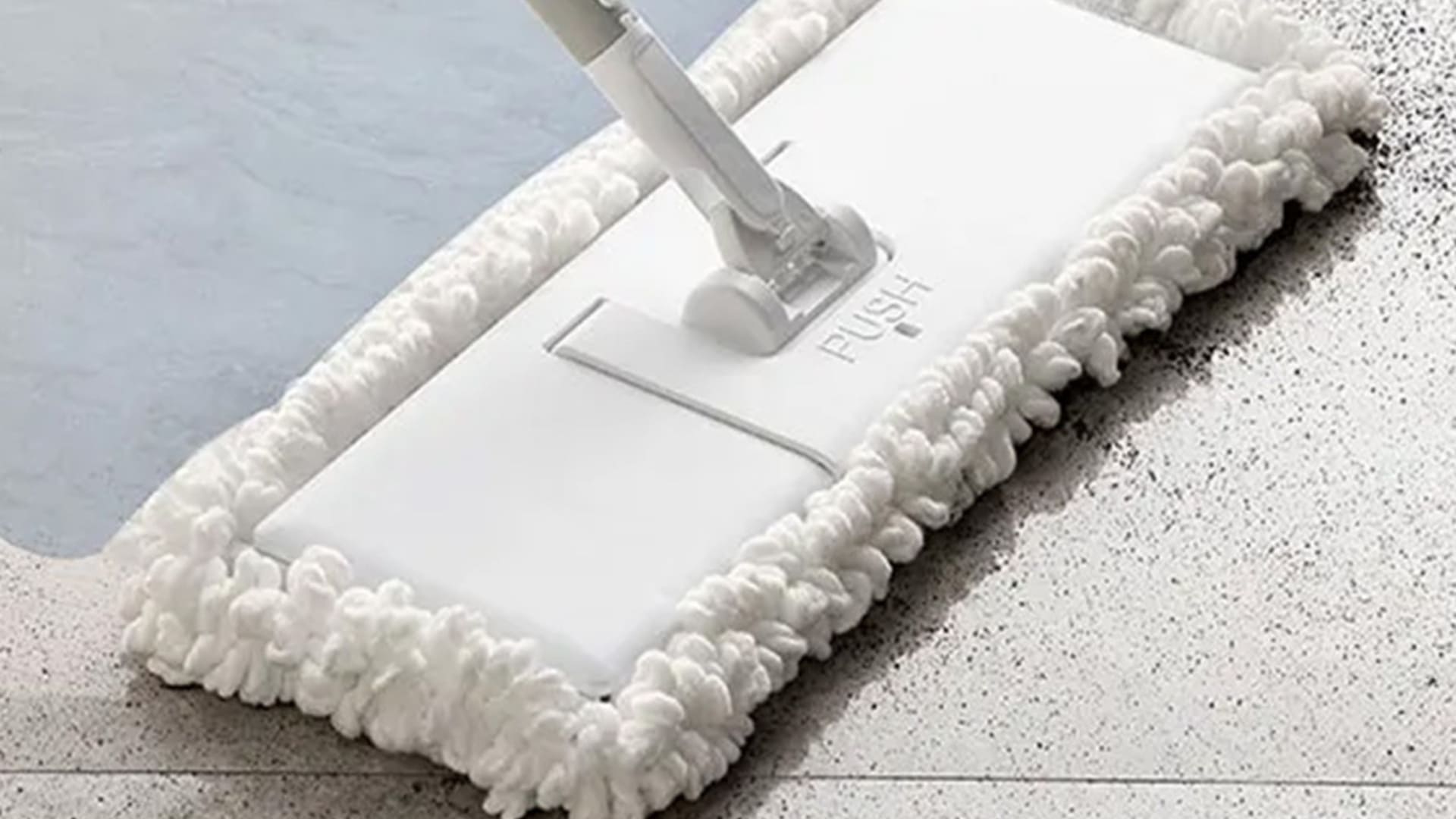
Sponge Mops
Sponge mops feature highly absorbent, porous heads that excel at cleaning textured or uneven surfaces. Their water-retention capability allows for thorough scrubbing of stubborn stains and grime, particularly on tiled floors. The sponge material conforms to surface irregularities, ensuring comprehensive cleaning in grout lines and textured areas.
However, the porous nature of sponge mops necessitates vigilant maintenance; regular cleaning and timely replacement are crucial to prevent bacterial buildup. While effective for specific cleaning tasks, sponge mops may not be as versatile as some other mop types and require more frequent replacement to maintain hygiene standards.

Non-woven Fabric Mops
Nonwoven fabric mops are made from synthetic fibers that are bonded together through chemical, mechanical, or thermal processes, rather than being woven or knitted. These mops are highly absorbent and durable, making them suitable for both wet and dry cleaning tasks.
Nonwoven fabric mops are often used in industrial and commercial settings due to their strength and resistance to tearing. They’re also lint-free, which makes them ideal for environments where cleanliness is crucial, such as hospitals or laboratories. For a common family house, nonwoven fabric mops are good for general cleaning and can be particularly effective on textured surfaces.
Synthetic Mops
Synthetic mops, such as those made from nylon or polyester, are lightweight and durable. They dry faster than cotton mops and resist mildew and mold. These are suitable for everyday mopping in high-traffic areas where drying time is a concern.
PVA Mop
PVA (Polyvinyl Alcohol) mops feature a highly absorbent, sponge-like material that can soak up to 10 times its weight in water. These mops are known for their exceptional cleaning performance and durability. The non-abrasive nature of PVA makes them safe for use on various floor types without risking scratches.
Unlike traditional mops, PVA mops are low-linting, leaving surfaces cleaner without residual fibers. They dry quickly, reducing the risk of mold and bacterial growth, and are resistant to many cleaning chemicals. PVA mops are reusable and, with proper care, can last longer than conventional mops. They’re particularly popular in commercial and industrial settings such as hospitals, schools, and large office buildings, where efficient and hygienic cleaning is crucial.
While initially more expensive than traditional mops, their longevity, and superior cleaning capabilities often make them a cost-effective choice in the long run.

Dry and Wet Mops Pad difference
Dry Mop Pads
Dry mop pads are designed to clean dust, dirt, and debris from floors. They are made from materials like microfiber, which attracts and traps particles. These pads are great for sweeping and removing loose dirt before using a wet mop. They’re especially effective on hardwood, laminate, and tile floors. Dry mop pads are reusable and can be washed after use, making them eco-friendly and cost-efficient.
Uses of Dry Mop Pads
- Sweeping up dust and debris.
- Removing pet hair and allergens.
- Maintaining cleanliness in between deep cleans.
Wet Mop Pads
Wet mop pads are used for deep cleaning with water or a cleaning solution. Made from absorbent materials, these pads lift and remove grime, stains, and sticky residue from floors. Wet mop pads are ideal for cleaning surfaces that need a more thorough wash, like bathrooms and kitchens. Similar to dry mop pads, they can be washed and reused.
Uses of Wet Mop Pads
- Deep cleaning and sanitizing floors.
- Removing stains, grease, and grime.
- Best for areas with heavy foot traffic.
Must-Have Features in a High-Quality Mop
When choosing any type of mop, there are several characteristics to consider:
Headband Type: Durability and Flexibility
A good mop should have a strong headband. For this purpose, go for polyester headbands because these headbands are flexible and long-lasting. These types do not show signs of wear and tear and are reusable for over 500+ cycles. In ensuring the mop head lasts longer and stays in place during use then, the grip of the mop yarn is so secure.
Yarn Ply: Strength and Longevity
When it comes to yarn, 4-ply or 5-ply yarn offers increased strength. The more plies, the more durable the mop. Multi-ply yarn reduces wear, which means less breakage or fraying. For instance, a 5-ply mop can last up to 3 times longer than a 2-ply mop, making it ideal for heavy-duty cleaning tasks.
Absorbency: Fast and Efficient Cleaning
The softness and absorbency of a mop are the keys to quick cleaning. Choose mops that have microfiber or cotton blends because such products can hold up to 7 times their weight. Not only does this shave considerable time from total cleaning time and lower the frequency of wringing.
Handle Length: Comfortable Reach
A mop handle should be adjustable between 54 to 60 inches. This range accommodates various heights, ensuring the user doesn’t have to bend, reducing strain and increasing comfort
Mop Care and Mop Storage
To clean the mop, rinse it thoroughly after each use. This helps remove dirt and cleaning solution residue. After rinsing, wring out excess water to prevent mold and mildew from forming. For best results, consider using a mop bucket with a wringer to get rid of excess moisture effectively.
To clean the mop head, regular washing is key. If the mop head is machine washable, toss it into the washer with hot water and mild detergent. Otherwise, soak it in a cleaning solution like bleach or vinegar to disinfect it. Let it air dry completely before storing to prevent bacteria growth.
For storage, ensure the mop is kept in a dry, well-ventilated area. Hanging it up is the best option. This prevents the mop head from touching the floor and collecting dust or moisture. Using a mop holder or wall hook ensures proper air circulation around the mop, keeping it fresh for the next use. Always store the mop upright to avoid bending or damaging the handle.
Enhance Your Cleaning Product Line with Top-Quality Wholesale Mop Supplier
JESUN is a reliable name in the cleaning industry and has been dedicated to manufacturing premium cleaning tools since 1986. We have a comprehensive list of wholesale cleaning tools including various types of mops, which are used by clients from all over the globe.
Our competitive advantage lies in the fact that we offer not only wholesale quality cleaning tools but also OEM/ODM services with low MOQs for business partners all over the world. JESUN pays a lot of attention to quality assurance and therefore all the products produced meet the required standards. The distributors, dealers, and sellers can be assured of associating with JESUN for superior cleaning products.
If you are looking for a reliable wholesale mop supplier for your business, then look no further and contact us today!

Final Thoughts
Mop is a staple in households, offices, and industrial spaces for keeping floors clean. Choosing the right one can make a big difference in how effectively you clean.
Consider factors like the type of flooring you have. Also, think about the mop’s ease of use and how often you’ll need to replace mop heads. Some mops are better for hardwood or tile floors. Others are designed for more industrial cleaning tasks. The perfect mop will not only clean better but also last longer.

